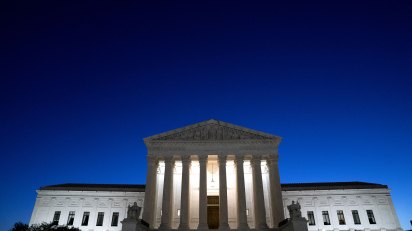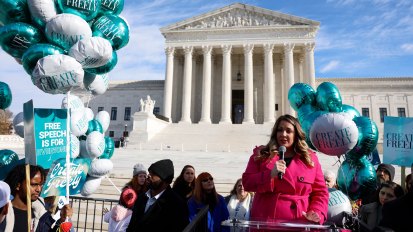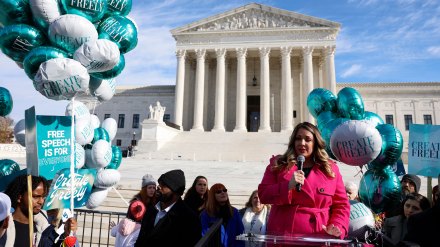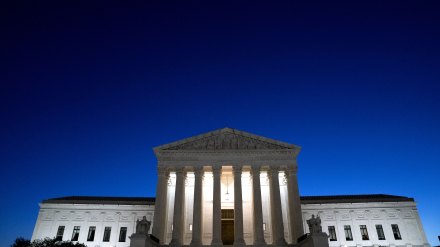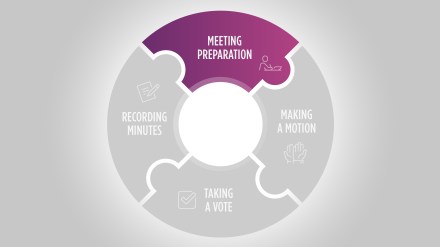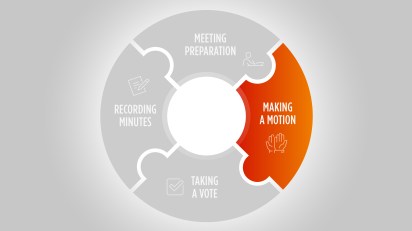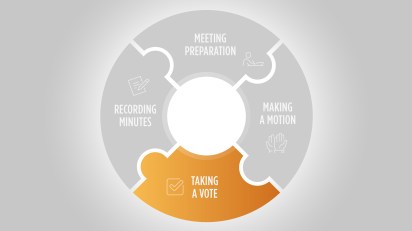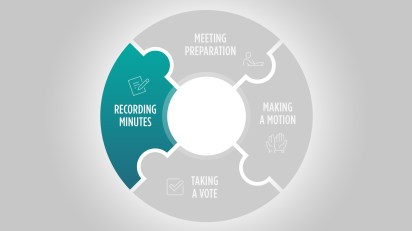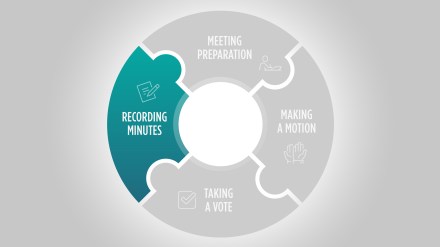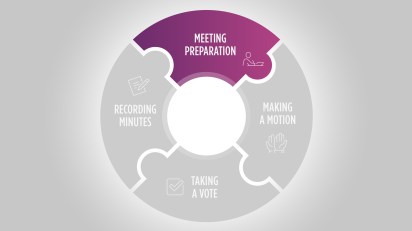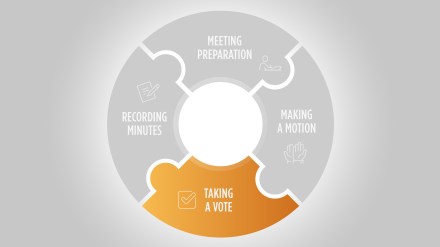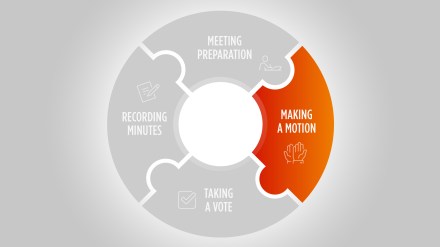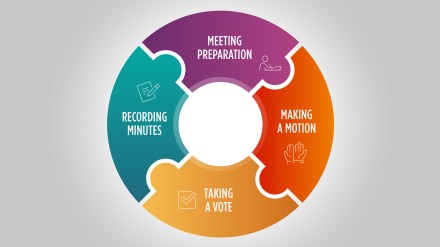Is off-campus liability a potential reality for churches? It’s an important and ongoing question that church leaders need to address. That’s because many events and activities occur beyond a church’s building and property.
Several courts have addressed this issue in cases involving both churches and non-religious charities.
We’ve summarized several key cases below. Non-religious charities are included because of the relevance of such cases to churches.
Leaders should:
- Review the facts involved with each case.
- Review the decisions made by the courts involved.
- Review the key takeaways and questions to address.
Doing this will position leaders to assess potential legal and risks liabilities associated with off-campus activities.
Church picnic ATV accident
A Sunday School class teacher organized a church picnic that was conducted on the property of a church member. The pastor of the church attended the picnic but played no role in its planning or operation.
The Sunday school teacher notified church members about the picnic during a Sunday school class and a paper was passed around for members to sign up to bring food.
The teacher also encouraged church members to bring their friends and family to the picnic.
Church members provided the food, not the church. Other things like rifles and an all-terrain vehicle (ATV) were brought by church members.
A church member volunteered to bring his ATV to the picnic. The member was “pretty sure” that he asked the permission of the teacher and the property owner where the picnic was being held if he could bring it. However, he was sure that “nobody requested him to bring it.”
The picnic attendees included a couple and their 15-year-old son (“driver”), who brought a friend (and fellow church member) (“passenger”) along.
The driver was driving the ATV during the picnic, with the passenger riding on the back, when he took a turn too sharply and lost control of the ATV. The ATV rolled onto the passenger’s leg, breaking his ankle. The accident occurred on a public road one or two miles off the property where the picnic was hosted.
After the accident, an attorney representing the passenger’s parents asserted claims against the driver’s parents and the church. No claims were asserted against the owner of the ATV.
A dispute arose as to insurance coverage. The church’s insurance company insisted that it did not provide insurance coverage for the accident. The court noted that “it is undisputed that the church is the named insured under the policy” and so the issue under consideration was whether the parents were also insureds under the policy.
The church’s insurance company insisted that it did not provide coverage for the accident. The court noted the policy defined an “insured” as: any of your members, but only with respect to their liability for activities they perform on your behalf, or at your direction and within the scope of their duties.
The court noted that the “pertinent policy language is clear and unambiguous and … does not cover every activity undertaken by a church member that happens to be related to a church event.”
The court concluded that a church may be responsible for injuries occurring on a member’s property, but only if the activity causing the injury was done on “behalf of the church or at its direction, request, or benefit.” The court concluded that there was no evidence that the church was “involved in any way with the decision to allow the driver to operate the ATV.”
The court referred to a prior case, Philadelphia Insurance Company v. N. Texas Annual Conference, 2018 WL 2322071 (Texas App. 2018). In the Philadelphia Insurance case, a church member collided with a skier while snowboarding on a church-sponsored ski trip.
After the skier sued the church member, the church’s insurer filed a declaratory judgment action seeking a declaration that it had no duty to provide coverage for the accident because the church member was not covered by the policy. The court agreed with the insurer, finding that the church member was not covered under the policy because his snowboarding activity was not done on behalf of the church or at its direction, request, or benefit, even though the ski trip was sponsored by the church “for the purpose of strengthening their faith and encouraging their participation, membership and advancing the [church’s] mission.”
The Florida court agreed:
The same reasoning applies here. Although the church picnic attended by Liam and his parents was advertised during a Sunday School class at the church and was intended to promote fellowship amongst church members [the driver and his parents] were merely attendees of the picnic and their decision to allow the driver to operate the ATV was not done on behalf of the church or at its direction, request, or benefit. Thus, the [parents] were not insureds under the church’s insurance policy.
The court concluded that a church may be responsible for injuries occurring on a member’s property, but only if the activity causing the injury was done on “behalf of the church or at its direction, request, or benefit.”
The court also concluded that there was no evidence that the church was “involved in any way with the decision to allow (the boy) to operate the ATV.”
ASI Insurance Company, 2022 WL 2760479 (N.D. Fla. 2022).
Considering the Florida court’s decision, church leaders will want to learn the circumstances involved in—and the outcomes of—the following cases involving off-campus events.
Halloween hayride presents scary scenario
A North Carolina court ruled that a church could be liable for serious injuries suffered by a woman. The woman was seriously injured when she fell after stepping in to prevent a child from falling from a church-sponsored Halloween hayride. She was both impaled and dragged by the trailer carrying the riders.
A trial court later dismissed her lawsuit, but an appeals court found the trial court had erred in several areas:
Overloading
The woman claimed the church organized the hayride and determined what precautions should be taken for the riders’ protection. The church decided whether the lighting on the trailer was adequate and how many passengers were permitted on each ride.
The appellate court concluded that the trial court erred in dismissing this basis of liability.
Negligent supervision
The woman alleged the church failed to exercise reasonable care in the supervision of the children on the hayride as demonstrated by the fact that: (1) there was a lot of loud screaming and horsing around; (2) the light illuminating the trailer was insufficient to properly illuminate the entire bed, preventing proper visibility and supervision by the adults present; and (3) a child was close enough to the edge of the trailer bed to be within easy reach of one walking alongside of it.
The appellate court acknowledged that “where an adult host or supervisor is entrusted with and assumes the responsibility for the welfare of a child, they have a duty to the children to exercise a standard of care that a person of ordinary prudence, charged with similar duties, would exercise under similar circumstances.”
The amount of care that is required “increases with immaturity, inexperience, and relevant physical limitations.”
The appellate court concluded the woman alleged facts indicating that the welfare of the children on the hayride had been entrusted to the supervisors appointed by the church for purposes of safely operating the hayride.
Therefore, the appellate court decided the trial court erred in dismissing the negligent supervision claim against the church.
Key takeaways:
- Hayrides may result in death or serious injuries to participants.
- A church may be liable for such injuries based on negligent supervision of the activity, inadequate lighting, and overloading.
Clontz v. St. Mark’s Evangelical Lutheran Church, 578 S.E.2d 654 (N.C. App. 2003).
Deadly after-school party
Two students of a church-operated secondary school (the “school”) formally invited several other students to an “end-of-the-year party” in their home.
Alcohol was consumed in the house and in cars. One student (the “victim”) and a classmate drank alcohol in the victim’s car for an hour, and then went into the party with the remainder of their alcoholic drinks.
Hours later, the victim and his friend died when the victim’s vehicle collided with a tree at about 100 mph. The friend died instantly. The victim, whose blood alcohol was .09 percent, was paralyzed.
The victim and his parents (the “plaintiffs”) sued the school, the religious diocese that they alleged controlled the school, the school’s principal, the parents of the two students who hosted the party, and the convenience store that sold the alcohol to the victim and his friend. The plaintiffs and the school principal settled for $1.1 million, but the case involving the other defendants proceeded to trial.
Following a legal concept known as comparative negligence, jury awarded the plaintiffs more than $55 million in damages. They apportioned 53 percent of the negligence to the plaintiffs, and 25 percent to the school. They apportioned another 20 percent to the parents at whose home the party took place, and 2 percent to the person who bought the alcohol at the store for the victim and his friend.
The trial court allowed a $1.1 million setoff in the award for the settlement with the school principal. The court also entered an amended final judgment against the school and diocese for $13 million.
The school and the diocese appealed.
The state appellate court described two rules used in deciding if a school (or church, or any other youth-serving organization) is legally responsible for injuries to students during off-premises activities:
School-sponsored events. A school may be responsible for injuries to students during an off-site “school-sponsored” event. The court noted that the “sponsor” of an event is one who pays for it or takes responsibility for it. In this case, “no resources of the school were used to conduct the party. High schools may be said to sponsor a prom away from the school premises, but the event is on official school calendars; faculty and staff ordinarily attend and chaperone; and the boundaries of liability are normally the boundaries of the school-sponsored venue.”
School-related events. The court noted that the broader category of school-related events “requires some connection to the school’s academic and extracurricular programs. A school athletic team’s participation in a scheduled competition at another location is obviously school-related.” The court referred to Florida Supreme Court ruling that a school club’s off-premises meeting was school-related, subjecting the school to liability for negligence. Rupp v. Bryant, 417 So.2d 658 (Fla. 1982). In that case, the activity that caused a student’s tragic injury was officially prohibited by the school (a hazing ceremony).
The appellate court concluded that the victim in this case was not injured during a school-related event. It cited the following factors in reaching this conclusion:
- There was no extracurricular or student “organization” over which the school or principal could have exercised control. As a result, there was no duty to do so.
- There was no “club” that had been recognized, endorsed, or supervised in any way by the school.
- The off-premises activity was planned, hosted, and attended by a collection of students “having no name, group identity known to the school, or school-related purpose.”
- The two student “hosts” did not ask for or obtain the school’s permission to conduct the event. And the academic school year was complete when the students left the school premises (before the event began).
Key takeaway:
This case gives guidance for churches and church-run schools that hold off-site bible studies, parties, club meetings, recreational activities, and athletic events. Here are some points to note:
- Knowledge of an off-premises activity is not necessarily a basis for liability. There must be something more. The court concluded that liability may arise for either a “sponsored” event or a “related” event.
- A school, church, or other youth-serving charity may be responsible for injuries to minors during an off-site “sponsored” event. The court noted that the characteristics of a “sponsor” of an event include the following: (1) A sponsor pays for it or takes responsibility for the event; (2) the event is on its official calendar; (3) one or more of the sponsor’s employees typically attend as chaperones.
- The court also noted that a school can be liable for injuries to students during “school-related” events that involve “some connection to the school’s academic and extracurricular programs.” The court cited a school athletic team’s participation in a scheduled competition at another location, or a school club’s off-premises meeting. The court noted that the school’s duty of supervision extends to such activities if the group is officially sponsored by the school and the school reserves the authority to control its activities.
Archbishop Coleman F. Carroll High School, Inc. v. Maynoldi, 30 So.3d 533 (Fla. App. 2010).
Soccer club liable for injuries
An Arizona appeals court upheld a $7 million verdict against a youth soccer club because of permanent brain injuries suffered by a motorcyclist (“victim”) struck by a vehicle driven by a 16-year-old girl (“driver”). The driver was deemed to be driving carelessly while transporting other minors to a scheduled practice called by a club coach.
The victim’s guardian sued the soccer club, claiming that it was responsible for the driver’s negligence based on the legal doctrine of respondeat superior, which makes an employer responsible for the negligent acts of its employees while acting in the course of their employment. This principle has been extended to uncompensated volunteers acting negligently within the course of their duties on behalf of an organization.
A jury found the soccer club 1 percent at fault. It found the coach 16 percent at fault, and the driver 83 percent at fault.
However, the soccer club was responsible for paying the entire verdict based on the respondeat superior doctrine.
The soccer club appealed.
The appeals court noted that, in determining whether a charity is liable for off-campus injuries, two factors must be considered.
- “Whether the actor has submitted herself to the directions and control of the one for whom the service is done and (2) whether the primary purpose underlying the act was to serve another.”
The court concluded there was sufficient evidence to find the driver subjected herself to the club’s control on the day of the incident. The court also concluded that the primary purpose of her actions was to serve the club.
In support of this conclusion, the court noted that, on the day of the accident, the coach directed the players to meet at a predetermined location and carpool to practice instead of relying on parents to provide transportation. Furthermore, there was evidence the coach asked the driver to drive herself and her teammates because she had one of the bigger vehicles.
The court concluded that reasonable persons could find the driver performed this task primarily for the club’s benefit. Under club rules, she “had a general obligation to transport herself to and from practice, but she had no obligation to transport several of her teammates, as the coach requested that she do.”
The court pointed to evidence that the club exercised control over the 16-year-old’s driving to and from the practice site. The driver testified that, as the team was preparing to leave the practice site, the coach gave her directions back to the mall and directed her to follow him in his vehicle.
The appellate court also rejected the soccer club’s argument that the doctrine of respondeat superior could not apply to the driver’s “informal and temporary” conduct. It cited two cases as examples of court rulings finding that a nonprofit organization may be vicariously liable for the negligence of a one-time or occasional volunteer who injures a third-party while using his or her personal vehicle to transport goods or persons for that organization, so long as the organization exercised sufficient control over the volunteer’s actions.
Bartell ex rel. Hoesel v. Mesa Soccer Club, 2010 WL 502993 (Ariz. App. 2010).
Jury left to decide issue of ‘vicarious liability’
A baseball coach instructed his team to meet at the high school before a game. At the school, he asked for volunteers to drive to the game and a 16-year-old player (“Reel”) volunteered to drive himself and several players in his father’s SUV. While returning from the game, Reel was involved in an accident that injured two players in his vehicle and killed another.
A lawsuit was filed and named the American Legion post that sponsored the baseball team as a defendant. The post moved for the case to be dismissed, but based on the case’s facts, the court found it was for the jury to determine whether the driver was an agent of the American Legion post and whether that American Legion post was vicariously liable for Reel’s negligence.
Daniels v. Reel, 515 S.E.2d 22 (N.C. App. 1999).
“Agent of the church” status opens door for negligence lawsuit
A church member (the defendant) volunteered to deliver cookies to sick and infirm church members as part of the church’s Christmas program.
While making deliveries, he turned his vehicle into the path of a motorcycle. This resulted in severe injuries to the motorcycle driver, including the amputation of his left leg.
An Indiana court later found sufficient evidence for the jury to conclude the defendant was an agent of the church and subject to its control, thereby making the church responsible for his negligent driving. The court noted that the defendant drove at the invitation of the church, and the defendant had participated as a driver on previous Christmases. The court also noted the church picked the delivery date and provided the cookies. The church also organized the list of shut-in members who were to receive the cookies. The church also chose the people to whom the defendant was to deliver the cookies.
Trinity Lutheran Church, Inc. v. Miller, 451 N.E.2d 1099 (Ind. App. 1983).
Deadly crash and administrator’s knowledge of off-campus drinking
A high school senior died in a car crash after an end-of-year, off-campus party. The student had a blood alcohol content of .13 percent.
A faculty advisor and principal had prior knowledge of the students’ intent to consume alcohol at the party.
The trial court and a Washington state appeals court both ruled in favor of the school. This, despite the principal’s and faculty adviser’s knowledge and inaction. The plaintiffs appealed.
The appeals court followed other cases determining that “the nexus between an assertion of the school district’s authority and potential tort liability springs from the exercise or assumption of control and supervision over [a student] organization and its activities by the appropriate agents of the school district.”
The appellate court pointed to a disclaimer in the school’s student and parent handbook: “THE SCHOOL WILL NOT BE RESPONSIBLE FOR ANY EVENT THAT IS NOT OFFICIALLY SANCTIONED BY THE ADMINISTRATION.”
In this case, the party “was not officially sanctioned.” In addition, “the school’s policy in the handbook does not change the fact that the incident occurred at a time when the school had no duty to supervise the students” since it occurred after the end of the school year.
Rhea v. Grandview School District, 694 P.2d 666 (1985).
School liable for off-campus hazing injury
A school was found liable for negligence when a student was injured in a hazing incident during an off-campus, school-related club meeting.
The school’s duty of supervision extended to the activity because the event was both authorized and sponsored by the school, which reserved to itself the authority to control the club’s activities, and the fact that that club had a faculty advisor.
Rupp v. Bryant, 417 So.2d 658 (Fla. 1982).
‘Individual’ versus authorized capacity
A college was not responsible for a tragic accident during an off-campus excursion to celebrate the end of the school year because the teacher who drove the group did so in his individual capacity, after classes were officially concluded, and without authorization by the school.
Fernandez v. Florida National College, Inc., 925 So.2d 1096 (Fla. App. 2006).
Conclusions
The article summarized above demonstrates that churches may be liable in some cases for injuries occurring off of church premises.
Liability is virtually certain when an injury occurs during an official, scheduled event. These cases assist church leaders in evaluating the potential risk of off-campus activities, especially those involving minors.
Great care must be taken when planning such events in order to reduce the risk of injury and church liability.
In exercising such care, leaders should ask the following questions when evaluating upcoming events and activities for off-site events:
- Is our church directing, requesting, or benefiting from the activity or event? If so, courts will view the activity or event as an official one, expanding the church’s legal and risk liabilities.
If the event or activity is officially church-related, leaders should evaluate the risks of injury or death. They should then take steps to minimize problems, including (but not limited to):
- assigning adequate staff and volunteers to supervise and assist;
- ensuring adequate lighting and other safety measures are present;
- limiting crowd size or the number of participants at a given time;
- determining proper screen and selection of individuals who will drive; and,
- seeking professional businesses skilled in the high-risk events or activities that can instruct, supervise and train before, during, and after the event or activity.
Church leaders oftentimes learn about an unfolding plan for an event or activity but are uncertain whether it can be characterized as an official church activity. In those instances, the following questions may be helpful for evaluating the plans:
- Is the activity or event planned by a group or committee recognized, endorsed, or supervised by the church?
- Have those involved with the planning sought permission from the church?
- Have those involved with the planning requested resources (including money or materials) from the church? Has the church provided any?
- Has the church’s staff or leaders controlled or directed any parts of the planning, including transportation arrangements, dates and times, locations, or other logistics?
- Has the church officially promoted the activity or event through announcements on its website, its bulletin, its calendar, and/or during its worship services?
- Will any church staff members attend the event or activity in their official capacity?
A “yes” to any of these questions likely increases the possibility the event or activity will be viewed as a church-related one.
If leaders become concerned about this increased possibility, qualified legal counsel—as well as counsel with the church’s insurer—may help determine the best steps to take to help reduce risks and ensure the event or activity fulfills its specific purpose.
Lastly, as the court in Rhea v. Grandview School District concluded, a church policy specifically stating it will not be responsible for any event that it does not officially sanction may be prudent.
While such a policy does not fully shield the church, particularly if answers to one or more of the above questions is “yes,” it still demonstrates the church’s official position.
As an act of ministry, the church also might consider providing specific steps that an individual or group should take to have the event or activity officially sanctioned by the church.
Further Reading: This church was found not liable for injuries sustained by a teenager at an off-campus church event. Click here to find out the specifics.
Richard R. Hammar is an attorney, CPA and author specializing in legal and tax issues for churches and clergy.










